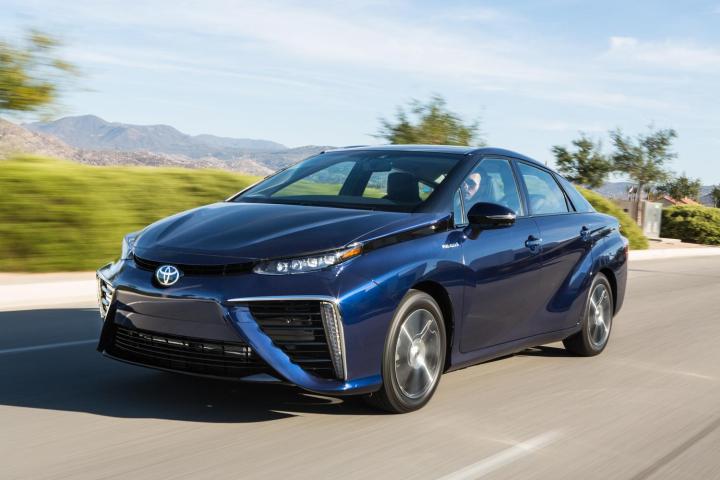
Whether hydrogen proceeds to take over the transportation industry remains to be seen, but Toyota’s Mirai, which means ‘future’ in Japanese, is rapidly approaching its on-sale date.
The automaker has just announced that eight California dealerships have signed on to sell the Mirai, and they will begin doing so this October. Locations in San Francisco, Roseville, San Jose, Sunnyvale, Longo, Santa Monica, Orange, and Tustin have been chosen for their advanced technology vehicle experience and for their proximity to the hydrogen infrastructure.
According to the California Fuel Cell Partnership, there are eight public stations in the state, but 49 more are in development.
Some of those 49 will be financed with Toyota’s direct help. Last May, the brand committed financial support to FirstElement Fuel, a group that plans to build 19 stations in California.
And at the Mirai’s first drive press event, held in Newport Beach, the automaker announced a partnership with industrial gas supplier Air Liquide involving the construction of 12 hydrogen stations across the Northeast United States, specifically in New York, New Jersey, Massachusetts, Connecticut, and Rhode Island. You’d think they’d bunch them a bit more closely given the small initial number, but the large geographical range may be an indication of more expansive future plans.
The all-new Mirai will be produced at the former Lexus LFA plant in Japan, at the rate of just three cars per day.
3,000 examples are planned to be built for the U.S. between now and 2017, each of which will cost $57,500 before federal incentives. For your money, you’ll get about 300 miles of range, zero direct pollution, quiet electric operation, and luxury-like options such as heated front and rear seats, a JBL sound system, and a futuristic interior.
Customers will be able to request the Mirai online starting this summer.
Editors' Recommendations
- All the hydrogen vehicles available for purchase
- Hydrogen was the fuel of tomorrow, so what happened?
- Next-gen Toyota Mirai confirmed despite continuing issues with hydrogen tech
- BMW teases hydrogen cars again with fuel cell X5 concept
- A self-driving Toyota will escort the 2020 Olympic flame in Tokyo


